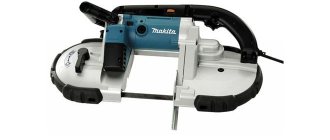A hoist is a lifting device with a manual, electric or pneumatic drive, suspended from beams or special trolleys moving along a suspended monorail track. Hoists are designed for lifting, lowering and horizontal movement of cargo suspended on a hook suspension. A distinctive feature of the hoist is its compactness. The industry produces electric hoists with a lifting capacity of 0.25 to 16 tons and manual hoists with a lifting capacity of: 1; 3.2; 5 and 8 tons. The height and speed of hoist lifting, respectively, is no more than 30 m and 0.05–0.15 m/s .
What is a manual hoist and where is it used?
Electrical diagram of a VAZ 2115 car
A manual hoist is used to lift and lower all kinds of loads when performing loading and unloading, installation, repair and construction work.
The unit can be operated at temperatures from -20 to +40 degrees. You can use a manual hoist to move loads in a horizontal plane if the mechanism is equipped with a cat. The design of a manual hoist includes a body with a mechanism for lifting loads, as well as a hook suspension from which the load is suspended. When lifting a load, a gear-gear transmission operates, which is manually activated by a chain thrown over a sprocket. The drive and movable sprockets of the hook suspension are wrapped around a welded or plate load chain. The manual hoist has a brake that prevents the spontaneous lowering of a lifted load.
The manual hoist has a wide range of lifting capacities and lifting heights. Structurally, a manual hoist is designed to be used by one person. Manual hoists are commercially produced with the following parameters: load capacity from 500 to 5000 kg, lifting height from 3 to 12 m. A manual hoist is a very useful and, in some cases, necessary device, which is installed in small car repair shops, used in small construction and other facilities. In case of failures in the supply of electrical energy in production, manual hoists turn out to be indispensable devices.
However, manual hoists have some disadvantages. For example, mechanisms require physical effort from workers, and are also inferior to electric models in terms of speed. Based on the type of suspension, manual hoists can be divided into the following categories:
- Mobile. They are suspended from trolleys that move on I-beams fixed to the object.
- Stationary. They are attached to the structure using the top hook.
Manual gear hoists are lifting mechanisms that consist of a gearbox and chain hoist, drive and brake mechanisms, load and traction round-link chains, and a movable block suspension with a hook.
The gearbox of the device is a two-stage, two-flow coaxial cylindrical gearbox with a load-bearing disc brake on the input shaft. This is required for smooth lowering and automatic stopping of the load when operating a manual hoist.
These hand-held devices can be hung permanently on a special hook or equipped with a mobile cat cart.
Category: Interesting » Industrial equipment
Elektrotal
Wheels for VAZ 14
Electric hoists can be stationary, portable and mobile. The former are used only for lifting loads; they are attached to the beams or floors of the workshop. Portable electric hoists are suspended from the top hook, similar to manual hoists.
The electric hoist consists of a drum for winding rope, a pulley and a trolley moving on a monorail.
Electric hoists, unlike manually driven hoists, have a more complex design and are driven by an electric motor.
Electric hoists are used for servicing machines when installing heavy parts and devices for processing, as stationary lifting devices during installation and disassembly of equipment, etc.
Electric hoists mounted on trolleys are called hoists. Carts can be manually or electrically driven for movement.
An electric hoist (telpher) is an electric winch (Fig. It consists of a trolley, an electric lifting motor, a gearbox, an electromagnetic brake, a drum for winding the cable ST) and a clip with a hook.
Electric hoists can be installed on crane beams, rotary cantilever beams, cantilever cranes moving along rail tracks.
Electric hoist 9 moves along the lower flanges of the supporting I-beam. The drive is connected to the second drive wheel by a transmission shaft 8 without intermediate supports.
An electric hoist (telpher) is an electric hoist (Fig. I, a), which not only lifts the load, but also moves it along a single-rail track located near the ceiling of the workshop. It consists of a trolley, a lifting electric motor, a leedductor, an electromagnetic brake, a reel for winding - J & HH cable and a clip with a hook. The hoist control buttons are located at the level of the worker’s chest.
Electric hoist 9 moves along the lower flanges of the supporting I-beam. The drive is connected to the second drive wheel by a transmission shaft 8 without intermediate supports.
The electric hoist consists of a drum for winding rope, a pulley and a trolley moving on a monorail.
Electric hoists are supplied with a manufacturer's passport, which contains their technical characteristics. A nameplate indicating the load capacity, lifting height, year of manufacture and serial number is attached to the electric hoist.
The electric hoist consists of two structurally related mechanisms: lifting and moving, each of which is driven by its own engine. The electric hoist moves along an I-beam on running wheels, which are driven by engine 5 through a spur gearbox. In the simplest electric hoists, braking devices are not installed on the movement mechanisms. Mechanical stops limit the movement of the hoist R on both sides.
Electric hoists (Fig. 3) are used for lifting and horizontal movement of loads. They are equipped with two electric motors to lift and move loads. The hoists are hung on I-beams.
Electric hoists can operate as stationary ones, being attached to floor beams or to specially laid beams. In cases where, in addition to lifting the load, it is also required to move it horizontally, electric hoists are attached to trolleys (cats) with a manual movement mechanism or to trolleys with an electric drive. Current supply is carried out by a flexible cable (with a short travel distance) or using trolleys located on brackets parallel to the monorail track. Electric hoists suspended from electrically driven trolleys are called hoists.
What type of hoists to choose
As a result, the specific device you choose depends on your situation. As a rule, manual models are widely used:
- when finishing the walls of high-rise buildings;
- during construction work when there is no access to electricity;
- in small auto repair shops where lifting of loads occurs quite rarely.
Telphers are used:
- in construction, where materials are constantly being lifted to heights, but there is no reason to use a crane;
- in workshops;
- when carrying out warehouse work.
In any case, it is worth considering the main functional characteristics, such as the required lifting height, the maximum load weight and the intensity of the hoist. If necessary, our consultant will answer all your questions and help you choose the appropriate manual or electric hoist.
Electric hoist, telpher, electric hoist
Electric hoists are designed for lifting and horizontal movement of cargo along a monorail track indoors and under a canopy at ambient temperatures from -40 to +40° C. They are used as an independent mechanism, as well as as part of suspended and support crane beams, cantilever, gantry and other cranes. They differ in load capacity, height, design, as well as operating conditions. Hoists are widely used in both small warehouses and large industrial enterprises. They are in many ways superior to their manual counterparts, have greater functionality and are faster.
- Electric hoists Bulgarian
Telphers and electric motors ELMOT AD - Chinese electric hoists
- Russian electric hoists
- Ukrainian electric hoists
In the CIS countries, electric rope hoists with one lifting mechanism with a load capacity from 0.25 to 12.5 tons are manufactured, which use double, quadruple and double pulley blocks, as well as hoists with two lifting mechanisms with double single, double and triple pulley blocks.
Electric hoists are manufactured in various designs: A – the electric motor is located inside the drum; B – the electric motor is built into the drum; B – the electric motor is built into the drum, an additional load-bearing brake is provided; G – electric motor outside the drum.
Electric hoists are manufactured for general use and special ones (high-lifting, explosion-proof) for moving along curved routes and along straight paths. Some hoists can be equipped with a two-speed motor, microdrive, brake on the movement mechanism, etc.
Operating mode group for electric hoists – 3M according to GOST 28835 (explosion-proof hoists – 2M). Type of current – three-phase 380 V, frequency 50 Hz. The hoists are powered via a flexible cable. The hoists are controlled using a pendant four-button remote control. Electric hoists are equipped with electromagnetic shoe or disc brakes.
We can also offer you a wide range of components and spare parts for this type of equipment.
If you need to buy an electric hoist or other lifting equipment, contact our specialists and get more detailed information. Our managers will always be able to advise and select you a hoist that will meet all the necessary requirements for the upcoming operation.
| Catalog of lifting equipment (PDF file): |
Special drive shaft. Drive chain and drive wheel
The hoist itself is suspended above the load itself, which must be lifted using a special trick. The lifting chain will be independently attached to the load. At the moment when we pull the drive chain, the drive wheel itself begins to rotate and rotates along the drive shaft, which begins to drive the gears, and at this time they turn the wheel of the lifting chain itself, which lifts the load itself.
It is worth taking a closer look at how gears produce the greatest concentration of lifting force in themselves, which is transmitted to the lifting chain. This drive chain is attached to a specialized segment on the drive wheel itself. The moment we pull, it begins to turn. The drive wheel is attached to a special friction plate, which is screwed to the ratchet.
At the moment when the plate and the ratchet begin to rotate together, the lock will fall into the teeth of the ratchet, preventing the wheel from unscrewing in the other direction under the influence of the weight of the load itself. With each process of transferring forces from one wheel to another, the force received from the drive chain increases several times.
The drive wheel is also mounted on the transfer shaft. As soon as the wheel begins to turn, it begins to drive the entire shaft. At the other end of this shaft there is a small and toothed gear, on which there are about 5 teeth at once. At the moment when it begins to make turns, the force transmitted by the action of the chain through a special drive wheel begins to increase rapidly. In this way, it increases in a special ratio of 7 to 5. A small toothed gear begins to drive the other two gears from the remaining wheels simultaneously.
Thus, the driving force of a small gear begins to be evenly transmitted by two wheels at once instead of one. A small gear immediately begins to drive 18 teeth, which are located on the remaining wheels. In turn, either of the two wheels has a small wheel at the back, which includes four teeth at once, increasing the total impact force by 18 to four.
These small wheels begin to drive a second wheel with 19 teeth in it, which begins to concentrate all the force on several links in the lifting chain attached to the last drive wheel. With the help of all these large and small wheels, the force from the drive traction can increase as much as thirty times.
A manual hoist is a fairly simple mechanism. It consists of a number of gears and two chains. A chain hoist makes an increase in total force as a result of the process of transforming a small number of forces that are applied over an overall length into a larger force that is applied over a smaller length.
Features of manual hoist
It is worth carefully familiarizing yourself with what a manual hoist consists of, as well as what principle of operation it can perform.
A manual chain hoist looks like a mechanical device that is used when lifting particularly heavy loads, equipment and various objects to various heights. It includes several circuits at once. One is the one for which the traction process is carried out, and the second is the one that carries out the lifting of the load. The force that can be generated while you pull the chain is 30 links at once, and also increases their lifting force by as much as thirty times.
The hoist will qualitatively increase the force, as a result of which the process of changing a small level of effort will be developed to the maximum applied to a large drive chain, which is attached to a shorter length of the load chain.
The manual chain hoist will include:
- Toothed gears.
- Load chain.
- Wheel made from a lifting chain.
Hoist operating conditions
It is prohibited to operate the hoist in an explosive environment; it is not allowed to be used for lifting and moving people, as well as toxic materials and hot metals.
Before starting to operate the hoist, the operator who will perform work using this device must be certified: undergo training in the use of this mechanism and pass exams for the right to operate it.
Worm hoists must comply with all explosion safety standards and requirements and undergo regular inspection by relevant specialists who supervise lifting mechanisms and record the results in the inspection log assigned to a specific workshop.
These lifting devices can be used in various weather and climatic conditions, as they have fairly good resistance to negative atmospheric factors.
Electric hoist operating principle and application
Wednesday, December 23, 2015
Modern lifting mechanisms - hoists - can be manual or electric. Electric hoists are divided into mobile and stationary.
Unlike manual hoists, electric hoists can lift heavier loads. They have a higher rate of ascent. They are usually installed on monorail beams on special trolleys. Electric hoists are also called telphers and electric hoists.
The domestic market today offers predominantly electric hoists of Russian and Bulgarian production. Electric hoists have different dimensions and technical characteristics. Any customer chooses the mechanisms that are needed for the work he carries out.
Design features of electric hoists
Any electric hoist consists of the following elements:
- gearbox;
- hook suspension;
- coupling;
- lifting drum;
- running trolley;
- cargo rope;
- electrical equipment.
Such hoists are intended for lifting, lowering and moving loads in a horizontal plane. The mechanism moves along a monorail or stationary channel.
Terms of Use
Electric hoists can be used under a canopy at temperatures from minus 20 to plus 40 degrees Celsius. If the electric hoist is equipped with a protective motor and special equipment, then it can work indoors. These mechanisms cannot be used:
- for transporting people;
- in a room with vapors of acids and alkalis, which have a negative effect on electrical wiring;
- in a room with explosive and flammable vapors and gases;
- on sea and river vessels in conditions of roll and pitching.
Production managers and shop managers can look at the catalog of electric hoists on the Internet on specialized websites to make an informed choice. Depending on which traction element is used, electric hoists can be chain or rope. Such mechanisms are stationary and mobile.
Application of electric hoists
Electric hoists are widely used in many industries. These can be small warehouses or workshops of large enterprises. Telphers have proven themselves well in the market. Both domestic and Bulgarian mechanisms meet European standards. They are available in a wide range of models and options. They can be used everywhere.
The use of these mechanisms depends on the specific production in which they are involved. It can be:
- construction sites,
- factory floors,
- store warehouses and similar places.
If the mechanism is made in a moisture- or dust-proof, explosion-proof design, it can be used in aggressive environments.
The hoist acts as an independent device for lifting loads, and in beam cranes, jib cranes and others, as a lifting mechanism.
Modern electric hoists of domestic and foreign production
The domestic lifting industry produces electric rope hoists of the TE type. Their design was developed back in the fifties of the last century. Despite such a considerable age, such hoists are produced and find consumers.
Along with products from Korean and Polish manufacturers, Bulgarian-made electric hoists in chain design are in particular demand in our country. Such hoists are low noise and compact, light weight and low height. Bulgarian produced a series of electric hoists called “Shipka” especially for Russia. Bulgarian factories Yantra, Balkanskoe Ekho, Skladova Tekhnika and others also operate for the Russian market of lifting equipment.
Worm types of hoists
The worm gear has been tested for centuries of use, and this mechanism is used in almost all industries. Such equipment can be moved on a monorail, which significantly expands the possibilities for its use. Lifting or transporting cargo using such a mechanism is not difficult, and such a device is well suited for repair work. The design of such equipment includes a rotating casing, which facilitates operations.
The use of worm hoists, although inferior to the use of gear systems, has not disappeared completely. The more reliable mechanism that the worm hoist has is offset by the significant dimensions of the housing, due to the peculiarities of its design. However, this equipment allows you to lift a weight of up to 10 tons. The traction wheel moves quite easily, and for heavy loads you should choose a model that includes an electric motor. The dimensions of hoists directly depend on its load capacity, and devices that perform work with a weight of up to 1 ton have the smallest dimensions.
Using hoists in life
In suburban farming you can find a considerable number of jobs where special lifting devices will act as a good assistant. First of all, when considering such a mechanism, a special thought arises about lifting such a heavy load to the attic window. These could be simple bags of pet food, agricultural blocks of hay, or even building materials to re-cover the entire roof.
And during the construction of a house, a manual type of hoist can be used well, especially during the construction of a frame structure. It is enough that you simply purchase a small crane, which will include a special mobile cantilever boom, or put together the same product from hand lumber, in which case you will have your own construction equipment. It and special reinforced concrete blocks under a strip foundation near a fence or building can be lowered in a special trench, as well as heavy types of pillars can be built vertically, and the bricks can be raised to the second level of the cottage under construction.
It is strictly forbidden to use a hoist to lift animals or people to great heights, as this would be a gross violation of safety rules.
In a garage, such a device is also quite useful in most cases, for example, in order to lift the body or remove the engine from the hood of a vehicle. Even in a modern apartment it is not difficult to find a use for such a useful device, especially if the house has high ceilings. In particular, the owner of both a scooter and a moped is able to lift his two-wheeled mobility device onto balconies located on the second floors.
With the help of an external boom, you can quite easily lift furniture to the upper platform in the house, either directly into the premises of a low-rise building, or, conversely, lower it to the lowest floor in the entrance. It is very easy to find the use of a hoist; the main thing is to choose the right device so that it can efficiently withstand the entire load that falls on it.
Lever types of hoists
For most jobs, reducing physical activity makes a huge difference. Among such equipment, the lever hoist occupies a special place. The specificity of the execution makes it possible, with little physical effort, to lift a weight that cannot even be moved manually. The maximum load capacity for such equipment is no more than 5 tons. These values will be sufficient to service the vehicle or carry out repair work. The entire control process is carried out using a lever, which is quite convenient and safe.
The design, in which the control lever is mounted into the housing, also imposes some special features on operation. The operator responsible for lifting the hoist should be in close proximity to the body, and not under the device. This model has high mobility, which makes it easy to use in open space or in a cramped garage. A lever hoist, the stationary installation of which does not cause difficulties, is suitable for most tasks that do not require the use of professional equipment. The speed at which the load moves is low, and such equipment is not suitable for rigging work, although it copes well with lifting heavy objects.
Purpose and design of manual hoist
The choice of mechanisms for vertical movement of cargo is quite diverse. Even for manual lifting, there are different types of hoists available to handle even the most demanding tasks. Depending on the purpose, you can choose a device capable of lifting significant weight or moving it in the desired direction. The ease of handling the load, its maximum weight and dimensions will influence the design of the hoist, which should ensure maximum productivity in work. Each of the mechanisms used has certain advantages and it is worth considering all their possible variations.
Gear types of hoists
The high reliability of this design is achieved due to the simplicity of its mechanism. A chain is installed on the gear hoist pulley, the ends of which are closed to each other. Through a gear transmission, the movement is transmitted to the load block, which is responsible for vertical movement operations. To stop the movement, gear hoists have a locking mechanism, which ensures that the load is held at a height without operator intervention. The force applied to move the control chain will determine the weight to be lifted and the speed at which such an operation is performed.
The use of a simple transmission mechanism guarantees reliable operation. This hoist has a high load capacity, which is ensured by the gear design. Equipment of this type allows lifting a load to a height of up to 12 meters, and the weight being moved is 0.5-10 tons. For the operator, lifting such heavy loads will be backbreaking work, and models with a large load capacity have an electric drive. Simple mechanisms, on the contrary, do not require additional equipment, which makes such devices affordable.











